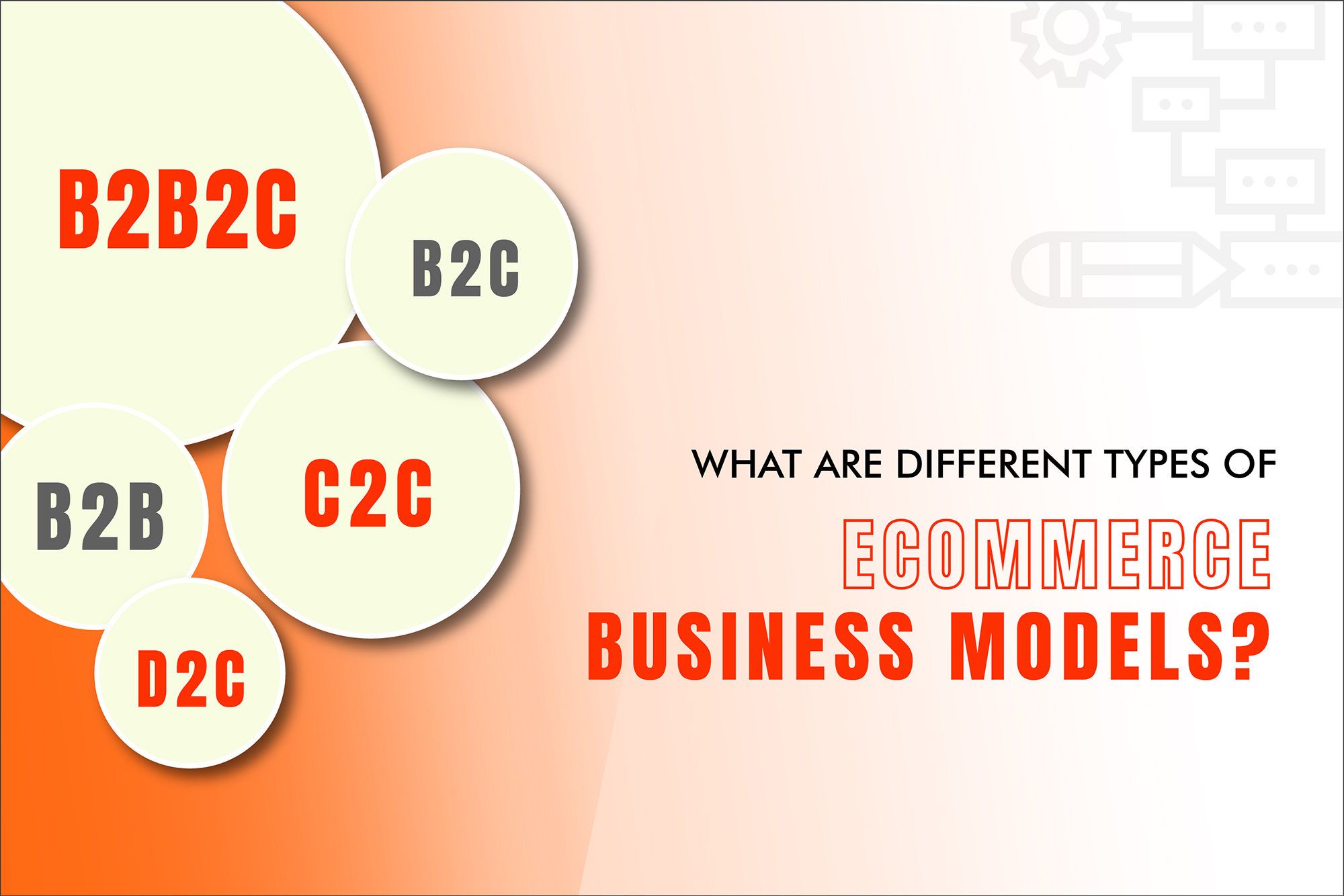
What are the different types of e-commerce business models?
Different business models serve the needs of different online retailers. Earnings for many are contingent on the volume of site visitors. Making the right choice when it comes to an eCommerce business model can be difficult, especially for those with little to no experience in the field. If you want your online shop to survive and thrive, you need to choose the appropriate business strategy.However, during eCommerce development, many individuals make the error of leaping directly to the nitty-gritty details and forgetting that all of this depends on the inventory you intend to sell and the sales model you choose. With proper planning and execution, an online storefront has the potential to become a financially rewarding business.
Different Types Of eCommerce Business Models
Business to Consumer (B2C)
B2C refers to the practice of selling a company's goods or services directly to the general public. It is the most well-known form of commercial activity.
When you go to the supermarket, a restaurant, the movies, or the barbershop, you are engaging in a business-to-consumer transaction. Five distinct B2C business models exist in eCommerce: direct sellers, intermediaries, ad campaigns, community-based, and premium-based.
● In most cases, the best strategy is direct sales. Shopping online refers to the practice of purchasing goods from an online store by a consumer.
● In internet commerce, intermediates are third-party websites that facilitate transactions between vendors and buyers for a fee.
● According to the advertising-based approach, content is provided at no cost to users while revenue is generated through the placement of advertisements.
● In order to monetize, social networking sites like Facebook use information about their users, such as age and location, to display relevant advertisements to them.
● Organizations like Netflix and subscription-based newspapers fall under the fee-based model since they charge customers to access information or entertainment.
Online business-to-consumer (B2C) transactions have increased in recent years. As more consumers opt to shop online, numerous brick-and-mortar stores have either shut down or shifted their focus to incorporate digital platforms. To effectively adopt the B2C eCommerce model, companies need a platform that can be modified rapidly to meet the evolving demands of their clientele without disrupting service.
Business to Business (B2B)
Business-to-business (B2B) refers to sales made directly between companies. There are two distinct approaches to B2B ecommerce: vertical and horizontal.
Companies with a vertical focus cater to buyers within the same market niche. When you take a horizontal sales strategy, you target buyers in a wide variety of markets.
B2B firms are increasingly emphasizing e-commerce despite a delayed adoption of digital methods. B2B digital commerce activities have recently surpassed B2C, according to a report by Gartner. It is predicted that "By 2025, 80% of B2B suppliers would sell directly to clients via digital commerce."
Business to Business to Consumer (B2B2C)
A business-to-business-to-consumer (B2B2C) transaction occurs when a wholesaler sells goods to retailers, who in turn sell them to consumers. The B2B2C paradigm can be implemented in numerous e-commerce contexts.
For instance, a business may offer a commission to its partner for each product or service sold after the two businesses has formed a partnership to promote each other's goods and services.
Direct To Consumer (D2C)
The term "direct to consumer" (abbreviated "D2C") refers to a type of business strategy in which manufacturers bypass traditional retailers altogether and deal directly with end users in terms of promotion, sales, and distribution of their products.
Direct-to-consumer companies typically sell their goods through their own online store, social media, and other outlets. D2C brands purposefully design their physical locations to increase brand exposure and consumer interaction, hence promoting more online sales. Because of this, some businesses have experienced rapid expansion.
Consumer to Consumer (C2C)
While the business-to-business (B2B) and business-to-consumer (C2C) models are well known, C2C models are exclusive to online commerce. The overwhelming popularity of online marketplaces like OLX, and eBay is largely responsible for this.
Users are able to barter, buy, sell, and rent items and services on these sites. The platforms take a modest cut of each transaction. This business strategy is intricate and requires thorough execution preparation. Problems with the law are a common cause of platform failure.
